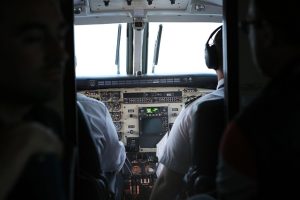
Ever wonder why airplanes use knots to measure their speed instead of MPH? The speedometers in cars, trucks and other land-based vehicles display speed in MPH. The airspeed indicators in airplanes, however, display speed in knots.
What Is a Knot?
To better understand why airplanes use knots instead of MPH, you must first familiarize yourself with this unit of measurement. By definition, a knot is a measurement of speed that’s equal to one nautical mile per hour.
The faster an airplane flies, the higher its knots will be. A typical commercial jet flies at a speed of roughly 450 to 520 knots. A speed of 450 knots means the airplane flies at roughly 450 nautical miles per hour. A speed of 520 knots means the airplane flies at roughly 520 nautical miles per hour.
Origins
The use of knots as a measurement of speed originated in the maritime industry. Long before pilots used it, sailors used knots to measure their speed. They would tie knots in a rope and cast it over the stern of the boat. As the modern-day aviation industry emerged, many pilots and aerospace manufacturers followed suit by using this same speed-based unit of measurement.
Navigational Consistency
Knots offer a more consistent method of navigation than MPH. As previously mentioned, a single knot represents one nautical mile traveled per hour. A nautical mile, though, translates into one minute of latitude. Therefore, knots provide better navigational consistency for pilots and sailors alike than MPH.
Standardization
Standardization is one of the main reasons airplanes use knots instead of MPH. Both knots and MPH represent the distance traveled over a period of time. Therefore, they can both be used to measure the speed of an airplane. But knots have become the universally recognized speed-based unit of measurement in the maritime industry as well as the aviation industry.
Nearly all airspeed indicators display the airplane’s speed in knots. True Airspeed Indicators (TAS) display the airspeed of the airplane relative to the surrounding, undisturbed air. Knots Calibrated Airspeed Indicators (CAS) display the indicated airspeed post-corrected for instrument errors. Regardless, nearly all airspeed indicators use knots as their unit of measurement.
Training
Pilots are trained to monitor and analyze the speed of an airplane in knots. A private pilot license requires 40 hours of training, whereas a commercial pilot certificate requires 250 hours of training. Regardless, during training, pilots must learn to interpret speeds using knots rather than MPH.



